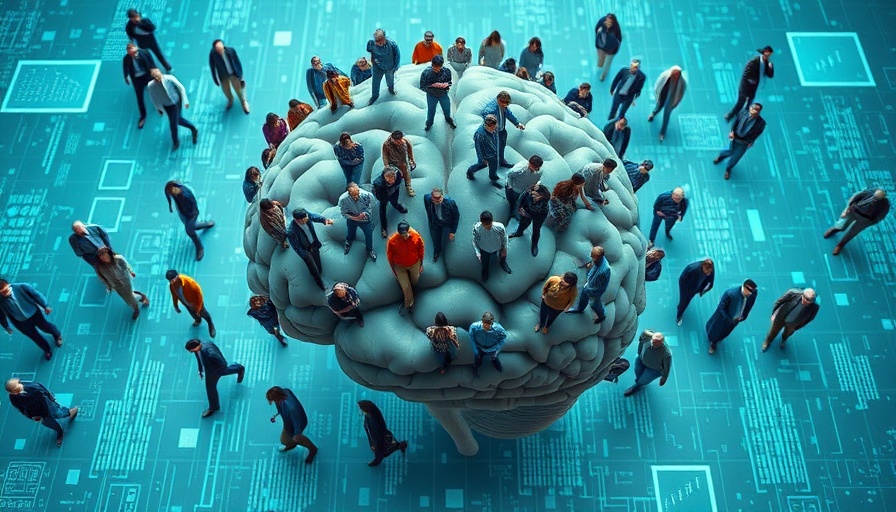
Understanding the AI Transformation
The advent of artificial intelligence (AI) is significantly transforming the landscape of work in both subtle and profound ways. From the healthcare sector employing AI-assisted tools to enhance patient care to robots optimizing the efficiency of retail, AI is not merely a tool for productivity; it is a catalyst for a comprehensive reevaluation of job roles and responsibilities. As we stand on the brink of this revolution, a pivotal question arises: how do we prepare the workforce for an era that is defined by intelligent technology?
Who is Responsible for Workforce Readiness?
According to industry experts like Josh Bersin, the call for redefining job roles and the structure of organizations is now more pressing than ever. AI is set to evolve nearly every position, with estimates suggesting that 92% of tech roles are on the brink of transformation due to automation. Yet, despite this impending shift, many employees find themselves ill-equipped to adapt without the support of their leaders. This oversight raises concerns about who is ultimately responsible for facilitating this transition. Are leaders stepping up to create an environment where employees are not only survivors of this technological shift but active participants in shaping it?
Leadership's Strategic Role in Transformation
The responsibility lies heavily on leadership to provide a framework for AI adoption that empowers rather than displaces workers. It’s no longer sufficient to merely implement new technologies; leaders must also help cultivate a clear understanding of organizational tasks and how AI can assist in those areas. By dissecting jobs into tasks, organizations can leverage the strengths of both AI and human workers, ensuring that each contributes effectively to achieving business goals.
Thriving Amidst AI Disruption
Moreover, as businesses are increasingly judged not just by their profits but by their ability to unlock human potential, a shift in perspective is needed. Rather than categorizing roles solely by skills, organizations should regard jobs through the lens of tasks. This approach allows for targeted reskilling, enabling employees to transition into roles that the tech landscape demands. For instance, in the financial sector, junior analysts can transition to data science roles in a matter of months with the right training. This illustrates an actionable path towards upskilling that leaders must champion.
The Imperative for Inclusive AI Integration
Inclusivity must be at the forefront of any strategy aimed at integrating AI into the workforce. The ongoing scrutiny from various stakeholders—be it employees, customers, or communities—calls for transparency and accountability. Businesses must prioritize humane elements in their AI strategies to avoid leaving any worker behind. Investing in the development and future of each employee not only aids business objectives but often results in greater employee satisfaction and loyalty.
Future Implications and Trends
As we gaze into the future, the challenge lies in how organizations will adapt to and embrace these technological advancements. The incorporation of AI into everyday operations can foster innovation, but only if there is a commitment from leadership to take a proactive stance. The future of work will necessitate a culture of continuous learning and adaptability.
The intertwining of AI with the workforce presents an opportunity for companies to rethink their operational strategies fundamentally. By prioritizing employee readiness and setting a foundation of shared responsibility, businesses can ensure a smoother transition into this new technological era that avoids pitfalls associated with displacement and job insecurity.
Conclusion: Building a Future of Collaborative AI
To facilitate this transition, leaders must not only adopt technological innovations but also think critically about the socio-technical systems they are part of. A future where AI and humans collaborate rather than compete is within reach, but it requires concerted efforts towards creating enabling environments where employees feel supported and valued.
As AI continues to reshape our workplaces, it is incumbent upon leaders to spearhead this movement, ensuring every worker is equipped for the future. The moral obligation is clear: Leaders must engage in re-engineering the workforce for tomorrow, laying a foundation where AI complements human roles, nurtures talent, and safeguards inclusivity. If you want to see how AI could expand your horizons, consider the implications discussed herein, and let’s foster a dialogue about navigating this critical evolution together.
 Add Row
Add Row  Add
Add 




 Add Row
Add Row  Add
Add 

Write A Comment